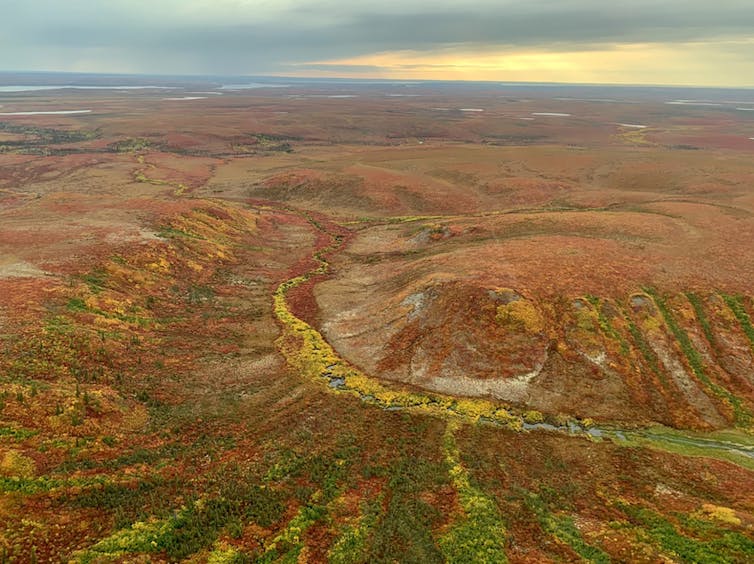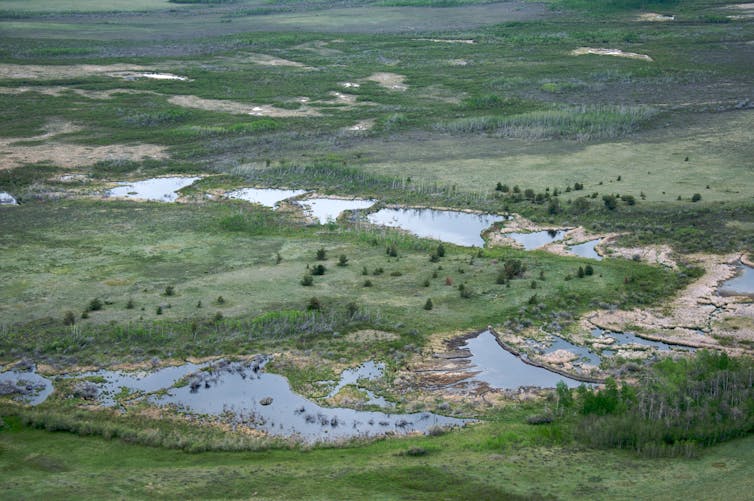Peatlands protect against wildfire and flooding, but they’re still under attack in Canada
October 28, 2021
Share

When killed 65 people, injured 1,068, destroyed 3,500 homes and caused billions in damages in 2010, it was no longer business-as-usual in Russia’s response to the impacts of climate change.
 Not only did the Russian government begin investing more in traditional fire suppression, fire science and prevention strategies, , to restore peatlands that had been badly degraded by agricultural developments and the mining of peat to produce energy for household use and power plants. A fifth of Russia is covered in peat, mostly the northeastern side of the country.
Not only did the Russian government begin investing more in traditional fire suppression, fire science and prevention strategies, , to restore peatlands that had been badly degraded by agricultural developments and the mining of peat to produce energy for household use and power plants. A fifth of Russia is covered in peat, mostly the northeastern side of the country.
Peat is partially decomposed plant material that builds up over centuries in cool swampy, waterlogged conditions such as bogs and fens and to a lesser extent swamps and marshes. Representing just three per cent of the Earth’s landscape, peatlands like those in the Hudson Bay Lowlands can . Collectively, they store twice as much as carbon than all of the world’s forests.
They also play an outsized role in filtering water and mitigating floods, drought and wildfires, such as those that . Had a large fen near Fort McMurray not been drained in the 2000s, , according to Sophie Wilkinson, a peatland scientist at McMaster University.
Canada, endowed with more pristine peatland than any other country, has a unique opportunity to preserve, and in some cases restore these ecosystems, found on the tundra, in temperate and boreal forests, in the Rockies and the Great Lakes region such as Georgian Bay.
Not only do they play an oversized role in managing climate change, regulating water and protecting critically endangered species such as caribou and whooping cranes, they offer denning sites for polar bears, turtles and Massasauga rattlesnakes. They also nurture many of the 546 plants that .
Global restoration efforts
Russia and Germany are not the only countries investing heavily in peatland restoration. , the most extensive mountain peatland in the world, after 700 kilometres of drainage ditches were dug in the 1960s and 1970s to provide more grazing for yaks. The restored fens now filter and store freshwater for tens of millions of people.
In the United States, the Fish and Wildlife Service is rewetting badly , a protected peatland on the border of North Carolina and Virginia, and Refuge, in North Carolina, to mitigate wildfires and floods and to keep carbon in the ground.
. The sale of horticultural peat that is extracted from bogs and fens will be banned in Great Britain in 2024.
Peatland under threat
Canada has been slow to recognize the many virtues of peatlands. . Hydro projects like . Mining companies, like the 18 that have . And cities like Calgary have drained peatlands to make way for urban developments.
Calgary recognized this mistake. It paid the price in 2013 when an . The worst flood in Canadian history may have been mitigated had there been peat to sop up some of the water. Sphagnum, one of many mosses that are the foundation of peat, holds 15 to 26 per cent of its weight in moisture, according to John Pomeroy, Canada Research Chair in Water Resources and Climate Change from the University of Saskatchewan.
But that flood would have been even worse had the been degraded, as the southwestern Rockies may be if coal developments there are allowed to move forward. In interviews , Pomeroy and his colleague Cherie Westbrook have underscored the need to protect alpine fens and forests.
While other countries, including the U.S. and the Republic of Congo, have mapped out their peatlands, Canada has not. The limited information makes it difficult to protect them.

Peatland maps
Peatland mapping has produced some surprising results, including the discovery of .
Not all fens cover areas as extensive as those in the Congo and boreal forest. Mountain fens in the U.S. tend to be very small. .
In each case, the distinct nature of these mountain fens play an oversized role in supporting insects, plants and animals and in storing water and carbon. Small peatlands such as the 18 inventoried in Wyoming contain 32 threatened plant species, four of which are found nowhere else in the state.
Over the past two decades, David Cooper, a wetland and riparian ecologist from Colorado State has, along with colleagues, identified thousands of high elevation fens that were previously unknown or unappreciated for what they were. The numbers in some cases are mind-boggling.
In the 2000s, were identified in the . Ninety per cent of these fens were found at elevations ranging from 2,700 to 3,600 metres. Cooper estimates there are more than 2,000 fens in the San Juan mountains alone, ranging in size from 0.2 to 20.5 hectares.
No one knows how many fens there are on the Canadian side of the Rockies because no one, including Parks Canada, has looked as closely.
150 billion tonnes
Many scientists continue to underestimate the virtues of peatland ecosystems because of the dearth of plant and animal species. This is true if you compare the peat-rich boreal forest region to the Amazon rainforest. But it is a false slight for all the other ecosystem services that peatlands offer.
One to three billion birds fly north to the boreal peatlands of North America each spring to breed, resulting in three to five billion of them migrating back in fall.
Scientists like at McMaster University, at Laval University and at the University of Waterloo, have the expertise to restore Canada’s peatlands. David Cooper is helping, as is Dale Vitt, a former University of Alberta botanist who pioneered the art of restoring peatlands. Yet their numbers are few, as are their funding sources.
If Canada wants to change course, it needs to catch up with what the rest of the world is doing in restoring and protecting peatlands. Thirty per cent of the world‚Äôs soil carbon stock is found in the world‚Äôs peatlands. Canada contains a quarter of that ‚ÄĒ .
_____________________________________________________________![]()
, Fellow, ĺŇ–„÷Ī≤• Institute for Energy and Environmental Policy, School of Policy Studies, .
This article is republished from under a Creative Commons license. Read the .